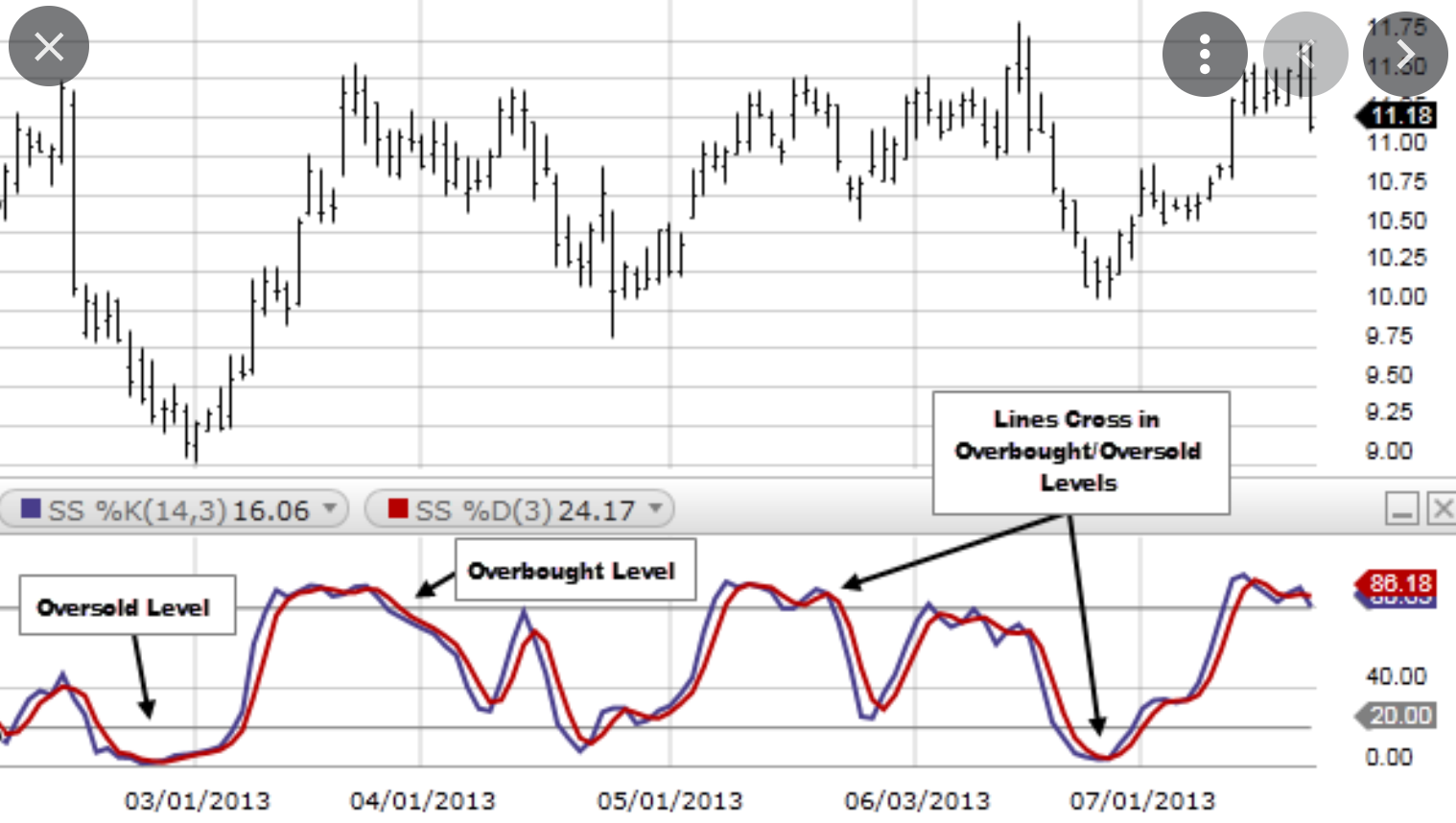47 Stochastic Oscillator And Williams %R
Short for Stochs, this indicator compares the most recent close, to the highest difference in price over a prior period of time. The general theory for this indicator is that in a market trending upward, prices will close near the historical high, and in a market trending downward, prices close near the historical low.
Stochastic is quite similar in its nature to the Williams %R with the most notable difference being their scales. The Williams Percent Range uses a 0 to -100 scale, while for the Stochastic the readings vary from 0 to 100. The Stochastic can also boast a moving average, used as a source of crossover signals.
This indicator can be used as confirmation from other indicators about reversal or trend continuation. Say, for instance, there has been a bull trend, but the Stochs start trending towards the lower part of recent price, this could indicate that the trend is running out of steam and could soon revert.

Figure 8.63: Stoch
As a hypothetical example, if the 14-day high is $150, the low is $125 and the current close is $145, then the reading for the current session would be: (145-125) / (150 - 125) * 100, or 80.
The Stoch indicator is defined with %K. At times, to smooth the data in %K, a moving average is added, or so call %D (e.g., commonly a 3-period moving average of %K).
Stochastic oscillator charting generally consists of two lines: one reflecting the actual value of the oscillator for each session, and one reflecting its three-day simple moving average.
This indicator varies between 0 and 100. Traditionally, readings over 80 are considered in the overbought range, and readings under 20 are considered oversold.
Because price is thought to follow momentum, the intersection of these two lines is considered to be a signal that a reversal may be in the works, as it indicates a large shift in momentum from day to day.

Figure 8.64: Stoch